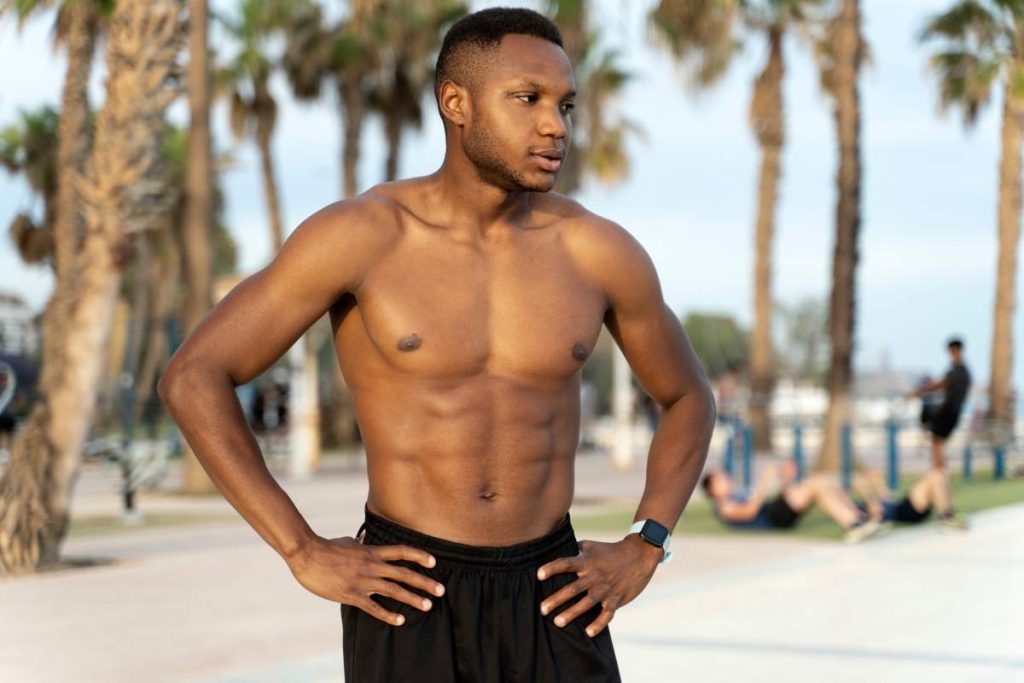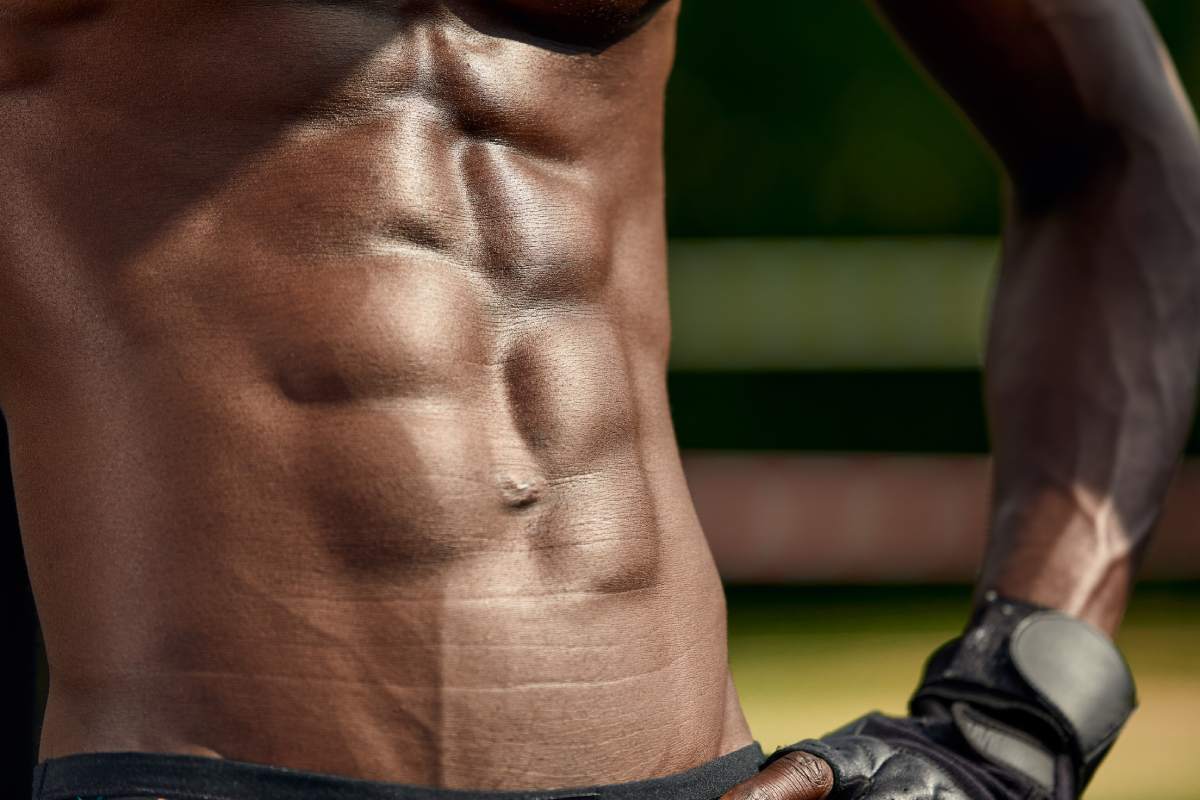Why Your 6-Pack Is Not Aligned and How to Achieve Symmetrical Abs
Having a well-defined 6-pack is often seen as the pinnacle of fitness, but for some people, despite achieving toned abdominal muscles, they notice that their 6-pack isn’t perfectly symmetrical.
This common issue can cause frustration, especially when you’re working hard to build a balanced, sculpted physique.
If you’re wondering why your abs seem out of alignment and how you can achieve a more symmetrical look, this article will explore the reasons behind this issue and offer practical tips to help you reach your goal.
Why Are My Abs Not Aligned?
Your abdominal muscles, also known as the rectus abdominis, are responsible for that iconic 6-pack look. These muscles run vertically from your ribs down to your pelvis, and they are divided by tendinous intersections, giving the appearance of individual “packs.” While some people have a perfectly symmetrical 6-pack, others notice that their abs appear staggered or misaligned. There are a few key reasons for this:
1. Genetics
One of the primary factors behind asymmetrical abs is genetics. Your genetic makeup plays a significant role in how your muscles are structured and how they grow. The positioning of your tendinous intersections (the horizontal lines that divide your abs) can vary from person to person. For some, these lines are perfectly even, while others may have them slightly off-centre or staggered.
Unfortunately, there’s no way to change your muscle structure, as it is predetermined by your genetics.
Solution: Embrace Your Unique Physique
Although you cannot change your genetic makeup, understanding that asymmetrical abs are normal and natural can help ease any concerns. Many professional athletes and bodybuilders have asymmetrical abs, and it doesn’t detract from their overall fitness level or appearance. Instead of focusing solely on symmetry, aim for overall core strength and muscle development. This will enhance the appearance of your abs, even if they aren’t perfectly aligned.
2. Muscle Imbalance
Muscle imbalances can also cause your abs to appear uneven. If one side of your core is stronger or more developed than the other, it can lead to an asymmetrical look. This imbalance can happen if you favour one side of your body during exercises like sit-ups, crunches, or side planks.
Over time, the stronger side will become more pronounced, making your abs appear off-balance.
Solution: Focus on Balanced Workouts
To correct muscle imbalances, you need to ensure that your workout routine targets both sides of your core equally. Incorporate unilateral exercises, which work one side of the body at a time, into your routine. Movements like single-arm planks, side crunches, or hanging leg raises can help you build equal strength on both sides of your core. Pay attention to your form during workouts, and avoid overcompensating with your dominant side.

3. Posture Problems
Your posture can affect the alignment of your abdominal muscles. If you have poor posture, such as slouching or a forward-leaning stance, it can place uneven pressure on your abs. Over time, this may cause one side of your core to become tighter or more developed than the other.
Solution: Improve Your Posture
Working on your posture can help balance your abs. Focus on exercises that improve overall core stability, like planks, bird-dogs, and deadlifts. Stretching tight muscles and strengthening weak ones can also improve alignment. For example, if you have tight hip flexors, stretching them regularly will allow for better core engagement during exercises. Additionally, practising proper posture throughout the day—whether you’re standing, sitting, or exercising—will help your abs develop evenly.
4. Injury or Surgery
Previous injuries or surgeries, particularly in the abdominal area such as a c-section surgery, can affect the alignment of your abs. Scar tissue or muscle damage can lead to uneven development, creating the appearance of misaligned abs.
Solution: Rehabilitation and Focused Exercises
If you’ve experienced an injury or surgery that’s impacted your core muscles, working with a physical therapist or personal trainer can help you rehabilitate the area properly. Specific exercises designed to rebuild strength and flexibility in the affected muscles can improve symmetry over time. It’s essential to approach core training gradually to avoid further injury.
5. Body Fat Distribution
Body fat distribution can also influence how your abs look. Even if you have a low body fat percentage overall, certain areas of your body may hold onto fat more than others. If one side of your core carries slightly more fat, it can make your abs appear uneven.
Solution: Reduce Body Fat
Achieving a lean physique that showcases your abs requires reducing your overall body fat percentage. A combination of proper nutrition, cardiovascular exercise, and strength training can help you achieve this. Focus on maintaining a balanced diet rich in whole foods like lean proteins, vegetables, fruits, and healthy fats. High-intensity interval training (HIIT) and resistance training are also effective in burning fat and building muscle, revealing your abs in the process.

How to Get Symmetrical Abs
While you may not be able to completely change the alignment of your abs due to genetic factors, there are steps you can take to improve the appearance of your abdominal muscles and create a more symmetrical look.
1. Train All Areas of Your Core
The rectus abdominis is just one part of your core. To develop a balanced physique, it’s essential to target all areas of your core, including the obliques (side abs), transverse abdominis (deep core muscles), and lower back muscles. By strengthening the entire core, you’ll create a more balanced look overall. Incorporate exercises like Russian twists, hanging leg raises, and bicycle crunches to engage different parts of your core.
2. Incorporate Unilateral Training
As mentioned earlier, unilateral training is an excellent way to address muscle imbalances. Exercises that isolate one side of the body at a time will force both sides of your core to work equally. Add movements like single-arm planks, one-legged squats, or single-arm kettlebell swings into your routine.
3. Improve Your Mind-Muscle Connection
Sometimes, the way you engage your muscles during exercise can influence their development. Focusing on the mind-muscle connection—where you consciously contract and engage your abs during each rep—can improve the effectiveness of your workouts. This technique ensures that both sides of your core are being activated evenly.
4. Stretch and Recover
Flexibility and recovery play a crucial role in muscle development. Stretching regularly helps maintain balanced flexibility in your muscles, which is vital for symmetrical abs. Yoga and dynamic stretching routines that target the core can enhance flexibility and prevent tightness. Additionally, prioritize rest days and recovery to avoid overworking one side of your core and ensure that your muscles grow evenly.
Conclusion
While your 6-pack may not be perfectly symmetrical due to factors like genetics or past injuries, you can still work towards a balanced and well-defined core. By focusing on balanced workouts, improving your posture, addressing muscle imbalances, and maintaining a lean physique, you can enhance the overall appearance of your abs.
Remember, the key to a great core goes beyond symmetry—it’s about strength, stability, and overall fitness.
